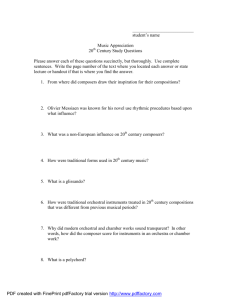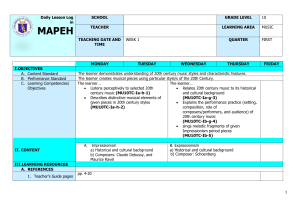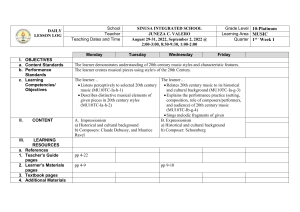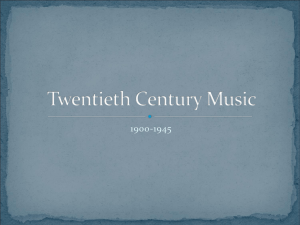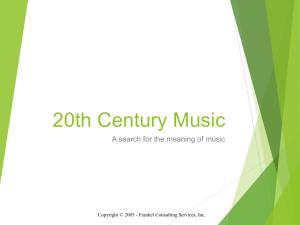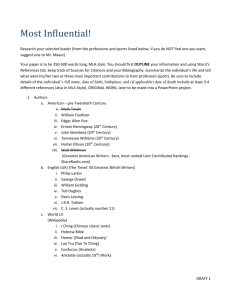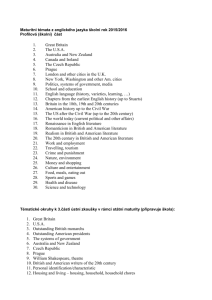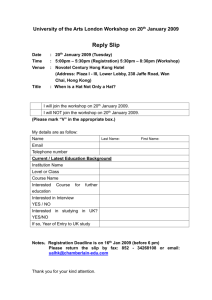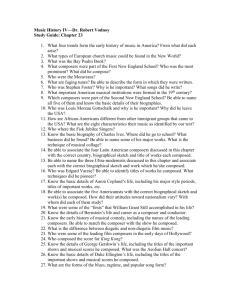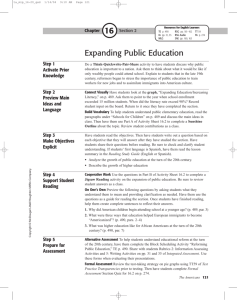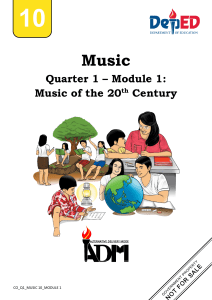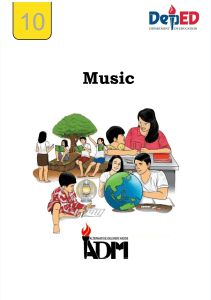20th Century Music & Realism Drama
advertisement
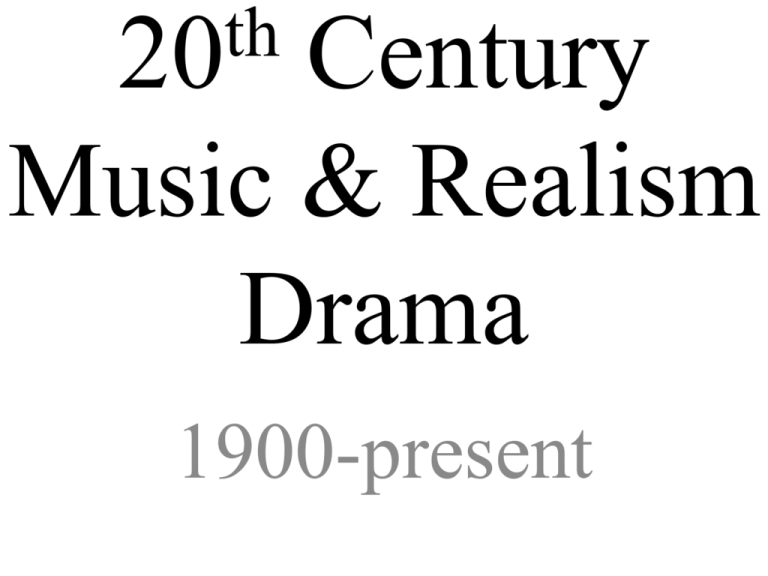
th 20 Century Music & Realism Drama 1900-present th 20 Century Music 20th Century Music • Tone Color –Became a more important element of music than ever before –Glissando – rapid slide up or down a scale • Harmony –Dissonance – was treated in the same way consonance was 20th Century Music (cont’d) • Rhythm –Irregular and unpredictable –Polyrhythm – use of two or more contrasting and independent rhythms at the same time, often found in 20th century music 20th Century Music (cont’d) –Ostinato – motive or phrase that is repeated persistently at the same pitch, used in 20th century music to stabilize a group of pitches • Melody –Melody became more difficult to sing Impressionism • Impressionism – musical style which stresses tone color, atmosphere, and fluidity, typical of Debussy (flourished 1890-1920) Debussy • 1862-1918 • French Impressionist composer • Developed a new fluidity of form and explored unusual harmonic relationships and dissonances Debussy (cont’d) • Not only among the most important of all French composers but also a central figure in all European music at the turn of the 20th century • His music virtually defines the transition from late-Romantic music to 20th century Modernist music Ravel • 1875-1937 • French composer who became a leading exponent of Impressionism • Along with Debussy he led French music away from Wagnerian Romanticism Ravel (cont’d) • He composed highly original, fluid, symbolic music within the outlines of classical forms. • He excelled at piano composition and orchestration, often scoring his own piano pieces and works by other composers. Neoclassicism • Neoclassicism – musical style marked by emotional restraint, balance, and clarity, inspired by the form and stylistic features of 18th century music, found in many works from 1920-1950 Primitivism • Primitivism – evocation of primitive power through insistent rhythms and percussive sounds Stravinsky • 1882-1971 • A Russian-American composer, is considered to be the greatest and most versatile composer of the 20th century • Helped revolutionize modern music Stravinsky (cont’d) • His influence is immeasurable, he revitalized the rhythms of European music and achieved entirely new sonorities and blends of orchestral colors. • The Firebird and The Rite of Spring were both ballets and are known as masterpieces of modern music. Expressionism • Expressionism – musical style stressing intense, subjective emotion and harsh dissonance, typical of German and Austrian music of the early 20th century Sprechstimme • Sprechstimme – in German, speechvoice; a style of vocal performance halfway between speaking and singing Schoenberg • 1874-1951 • Almost entirely self-taught by studying scores, playing in amateur groups, and going to concerts Berg • 1885-1935 • A student of Schoenberg • Music is a unique synthesis of traditional and 20th century elements Webern • 1883-1945 • Didn’t live to see the influence of his music in the 1950s and 1960s Bartók • 1881-1945 • Music has an individual style that fused folk elements, classical forms, and 20th century sounds Shostakovich • 1906-1975 • One of the leading composers of the Soviet Union • Leningrad, his 7th symphony, became a symbol of resistance against Nazi Germany Ives • 1874-1954 • American composer whose original music was ahead of its time • Music rooted in folk and popular music from his childhood • 1898-1937 Gershwin • A well-known 20th century American composer born in Brooklyn, NY • He wrote some of the most original and popular musical works produced in the U.S. Gershwin (cont’d) • Wrote scores for several musicals including: Funny Face and Of Thee I Sing • Combined traditional musical forms with jazz and folk themes and rhythms: Rhapsody in Blue, An American in Paris, and Porgy and Bess • Composed music for Hollywood films Still • 1895-1978 • Part of the “Harlem Renaissance” • Afro-American Symphony (1931) was the 1st composition by a black composer to be performed by a major American symphony orchestra Copland • 1900-1990 • A New York composer who used jazz and American folk tunes in his compositions Copland (cont’d) • Composed ballets that include Billy the Kid and Appalachian Spring • Composed music for films including Of Mice and Men • Major orchestral works are El Salon Mexico and the Third Symphony • “The Dean of American Composers” Serialism • Serialism – method of composing that uses an ordered group of musical elements to organize rhythm, dynamics, and tone color, as well as pitch Chance Music • Chance Music (aleatory music) – music composed by the random selection of pitches, tone colors, and rhythms Minimalist Music • Minimalist Music – music characterized by steady pulse, clear tonality, and insistent repetition of short melodic patterns Quotation Music • Quotation Music – works which make extensive use of quotations from earlier music tango • tango – Argentinean dance in quadruple meter for couples in close embrace vibraphone • vibraphone – percussion instrument of definite pitch with metal bars, similar to the marimba, with tubular metal resonators driven by electronic impulses bandoeon • bandoeon – square accordion used in tango bands, operated entirely with buttons marimba • marimba – percussion instrument with tuned wooden bars, similar to the xylophone, but larger and having cylindrical acoustic resonators Realism Drama Ibsen • Norwegian playwright • “Father of Realism” • Wrote about many controversial topics that sometimes astonished theatre audiences of the time Ibsen (cont’d) • In his play A Doll’s House, Victorian audiences were shocked because the lead character, Nora, leaves her husband and children Shaw • English playwright • Realistic characters • Thought of his plays as a way to educate society and make improvements that would raise the social and intellectual level of its citizens Shaw (cont’d) • In 1913, he wrote Pygmalion, a play that exposed the pretentious and phony ways of society
